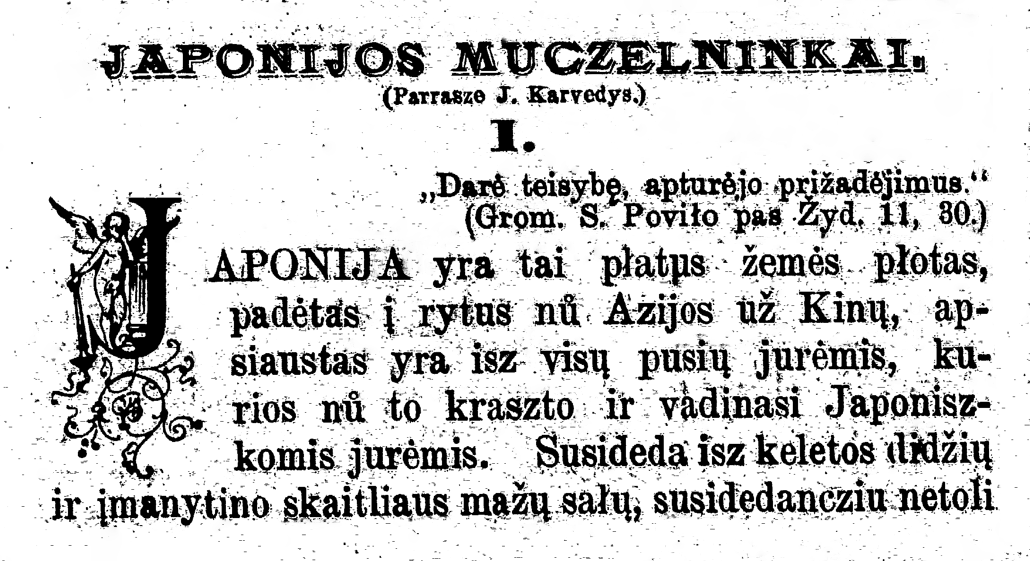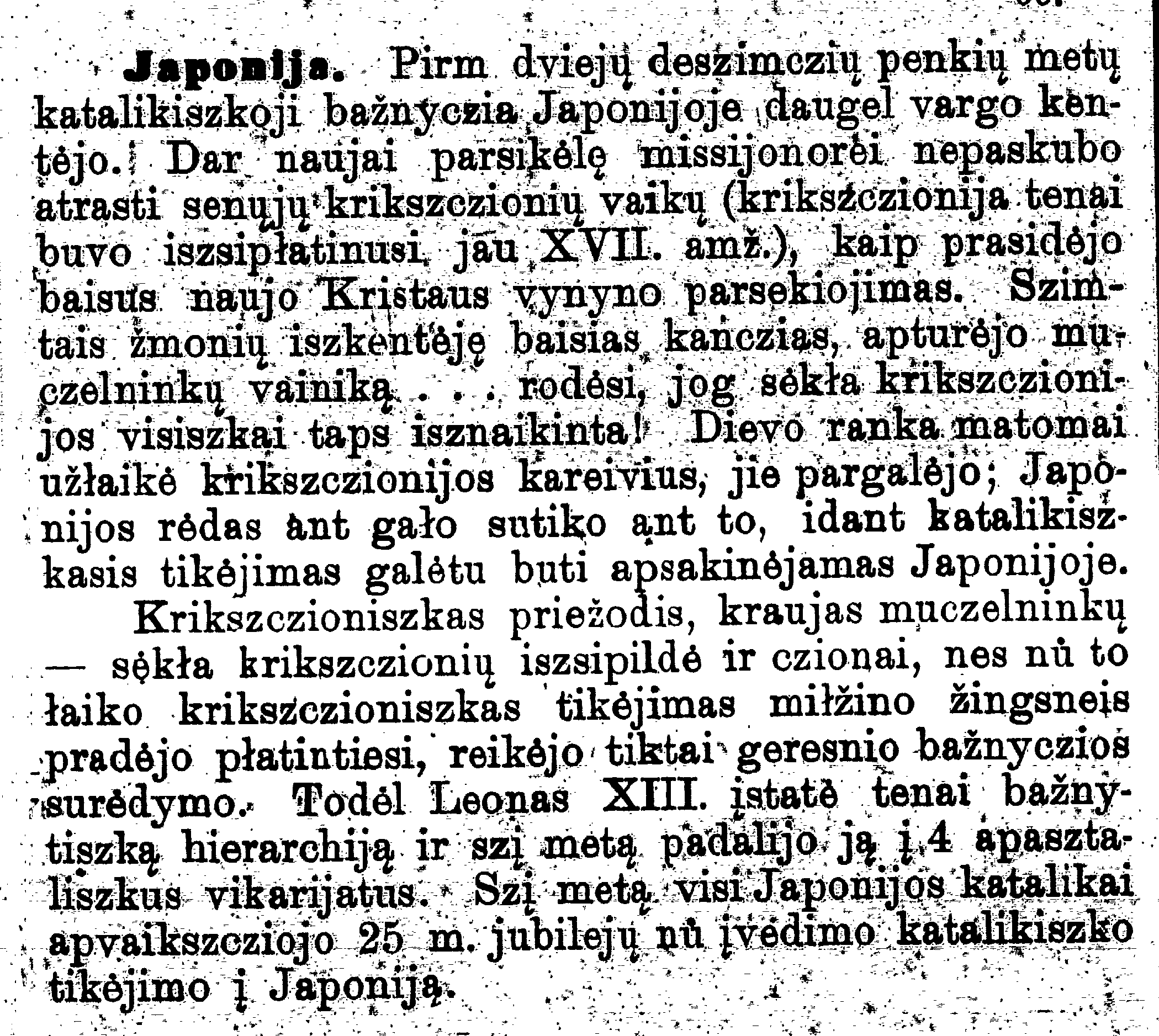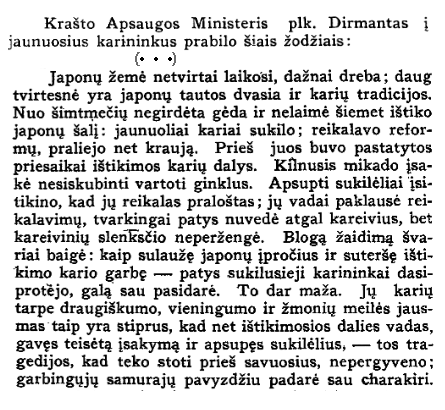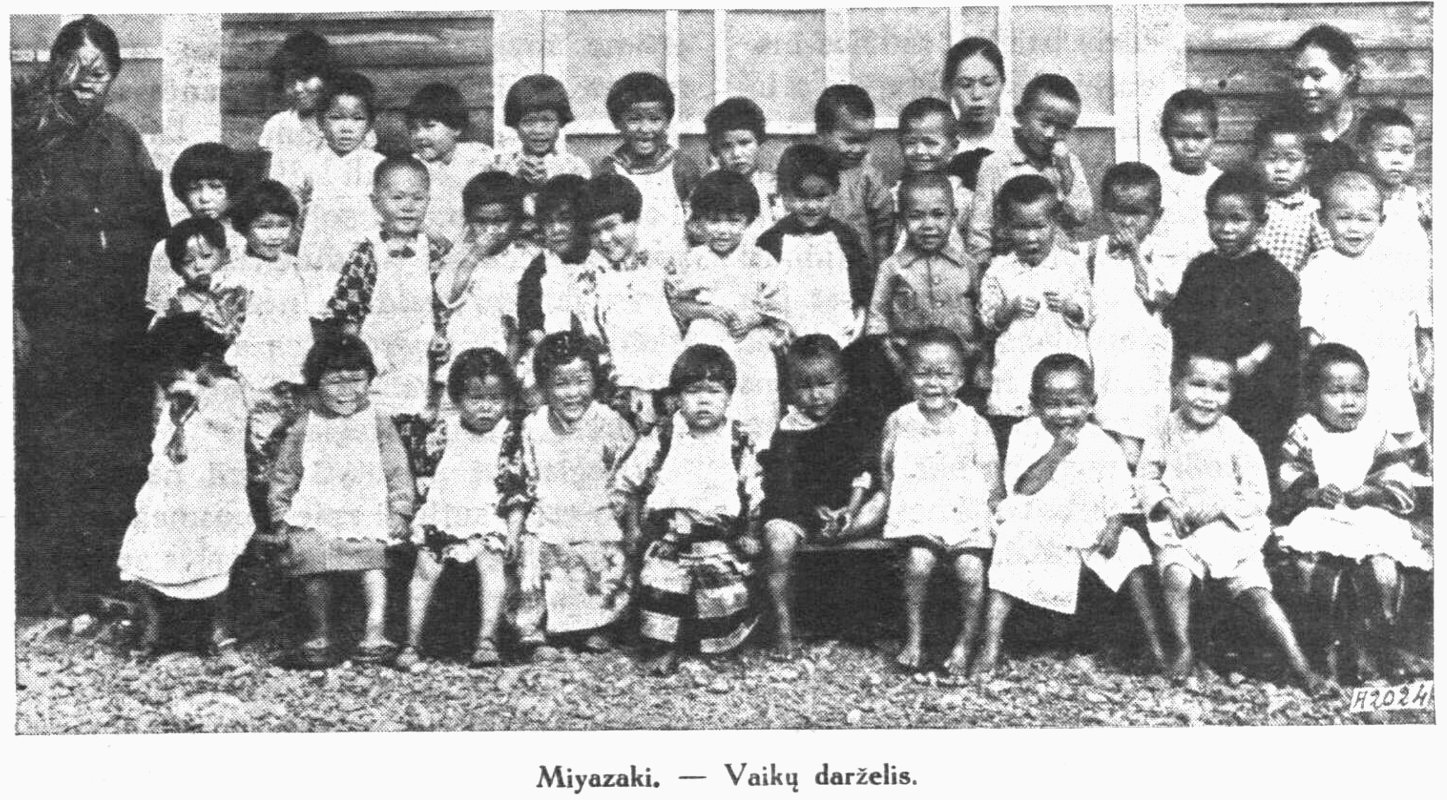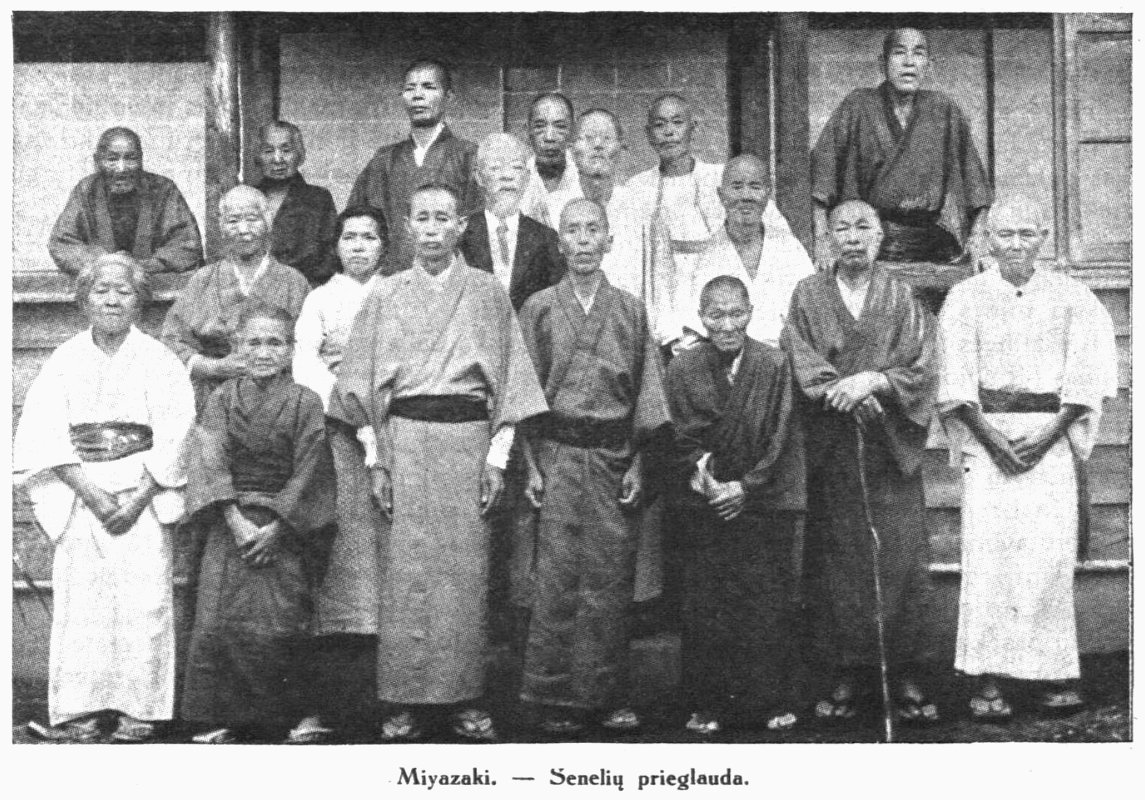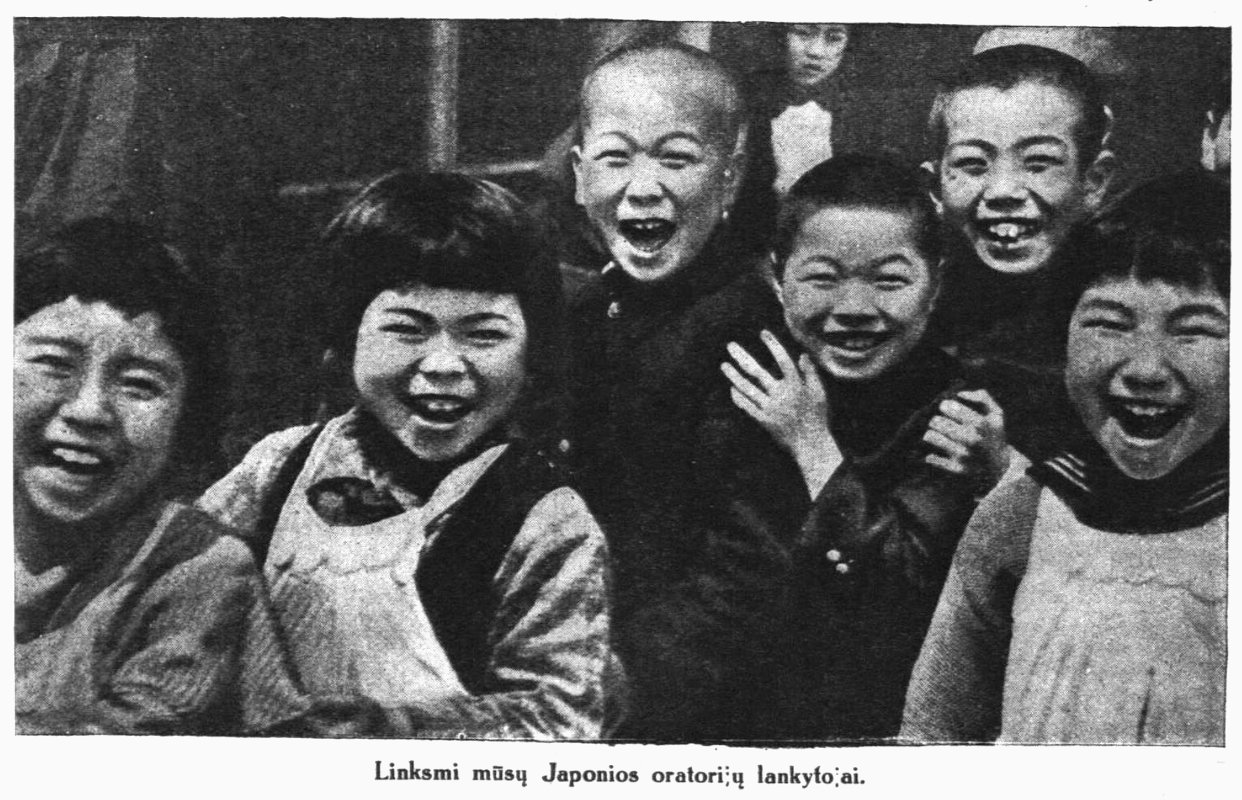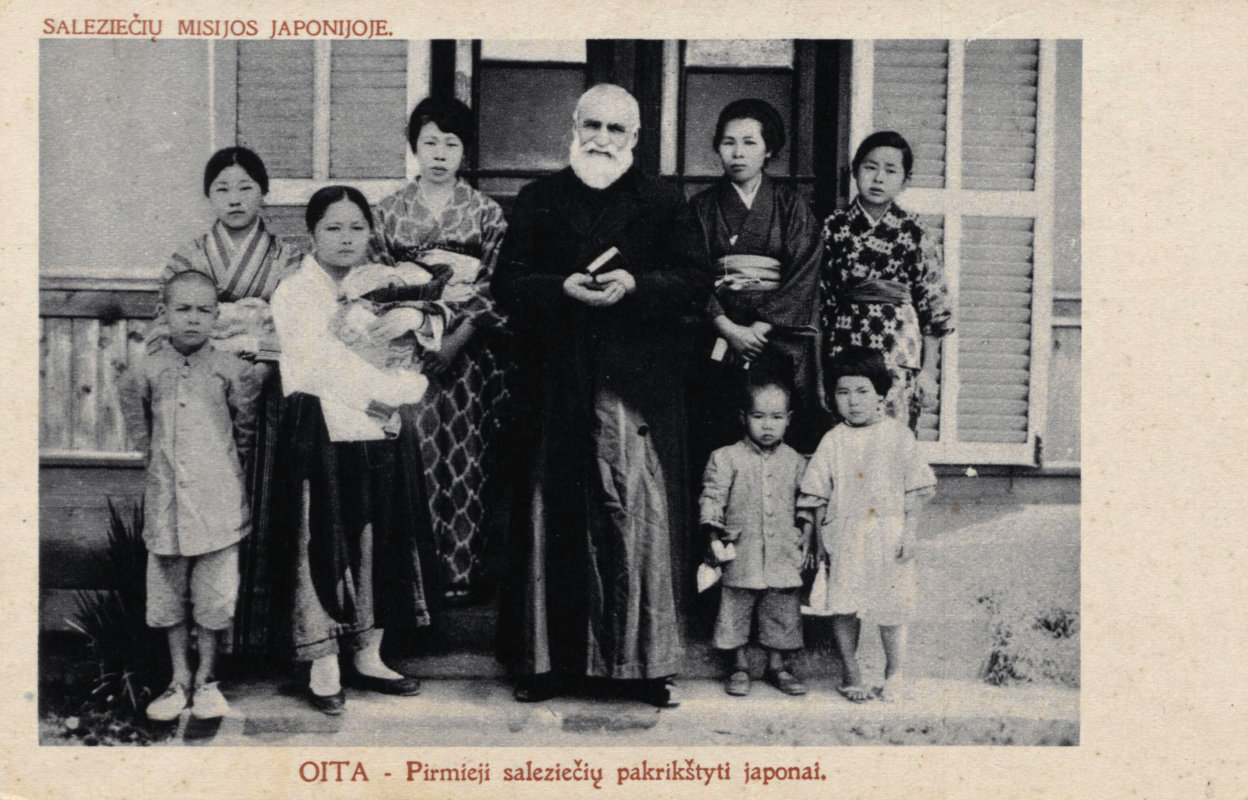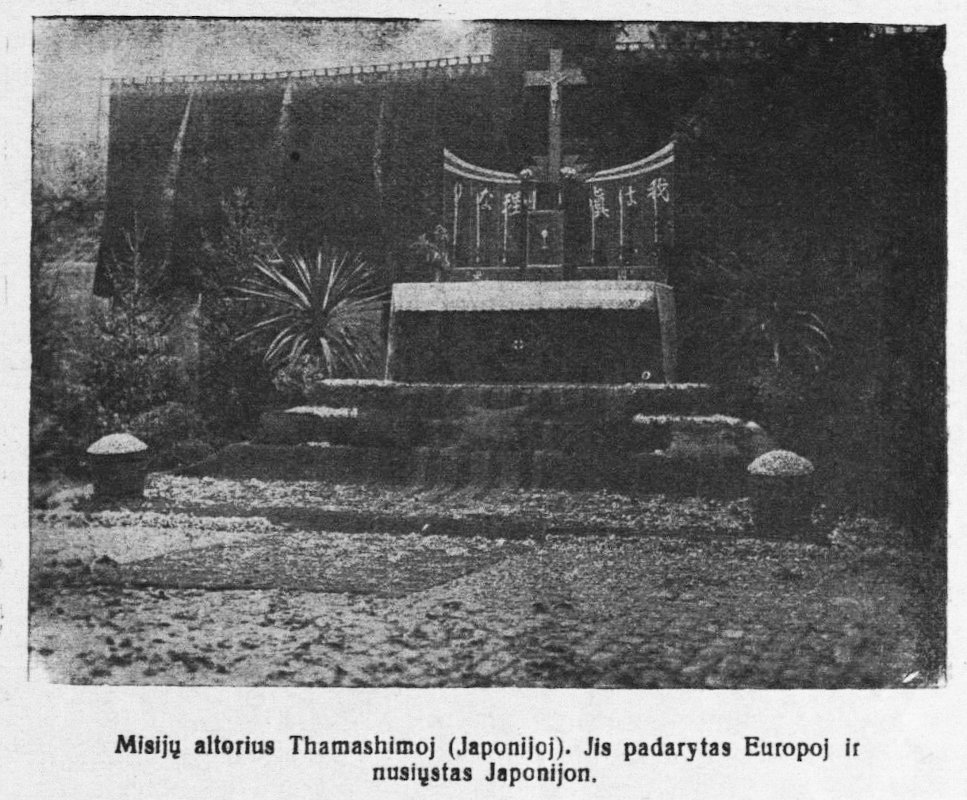Early representation of Japan in Lithuania
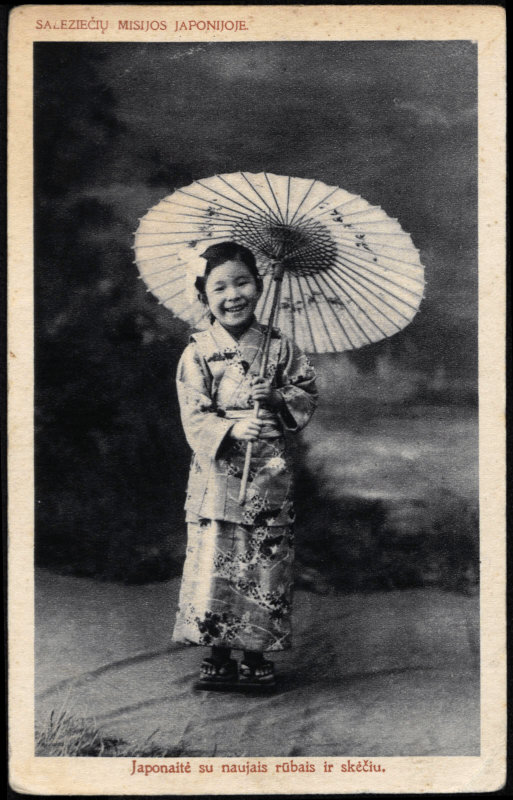
Benediktas Tiškevičius, Josef Pilsudski, and Matas Šalčius were the first Lithuanian travelers, who visited Japan and were able to share their impressions about this country in the 19th or early 20th century. However, going to Japan was a very rare thing, because Lithuanian people had limited abilities to travel and visit foreign countries at that time. Therefore, newspapers and other publications were among the main sources of information on such distant countries as Japan.
Despite the fact that there had been various publications about Japan in Lithuanian press since 1891, the vast majority of news and articles were translated from foreign news services or other sources. There were no Lithuanian reporters, who would live permanently in Japan. Consequently, a very generalized and exotic image of Japan was presented in the periodical publications and this distorted the picture of the country in some way.
The situation started to change after the articles of Lithuanian missioners spreading Christianity in Japan were published. The most active writers among them were the Jesuits and the Salesians. Of the latter, the most famous Lithuanian, who lived in Japan, was Albinas Margevičius.
(Martynas Mažvydas National Library of Lithuania)
Japan in Lithuanian newspapers
Lithuanian press was banned in Lithuania from 1864; therefore, the periodical publications of the Lithuanian diaspora played a significant role in that period of time. 82 different Lithuanian newspapers and journals had been published in the USA during 1897-1940. Clearly, Lithuanian audience could get acquainted with Japan from various perspectives even though the Lithuanian language was banned in Imperial Russia.

(article about major earthquake in Japan, "Žemaičių ir Lietuvos apžvalga", 1892, no. 2, p. 136)
The first known Lithuanian article about Japan was published in 1891. However, the news about Japan in the Lithuanian language started to be published constantly only when the Lithuanian press ban was officially lifted in 1904. After the declaration of independence in Lithuania in 1918, the popularity of newspapers and journals started to grow due to developing literacy. For instance, there were 165 different periodical publications and 136 of them were in the Lithuanian language in 1929. Research shows that 25 different publications at least once included information about Japan during 1918-1940.
Japan related topics
According to the research, the first articles about Japan in the Lithuanian press were published in 1891. In Tilsit (now – Sovetsk) the catholic newspaper “Samogitian and Lithuanian Review” (lit. “Žemaičių ir Lietuvos apžvalga”) published a series of articles about the activity of Lithuanian missionaries. This series was divided in fifteen parts and described problems of the catholic missioners in Japan in the 17th century.
("Žemaičių ir Lietuvos apžvalga", 1890, p. 150 and 1891, p. 54)
There were various types of periodicals for different types of readers. Consequently, various perspectives regarding Japan could be noted – from fascination to critics. For example, a negative perspective was visible among the socialists. At the same time, representatives of cultural journalism presented Japan in a positive way.
The image of Japan changed after the events on the 26th of February 1936 – there was an attempted overthrow organized by a group of young officers. Tighter censorship, unstable government activity due to frequent political assassinations, and the outbreak of the Second Sino-Japanese War led to the fact that Japan was considered to be a country suffering from domestic problems and following dangerous militarism policy.
Literature of missioners
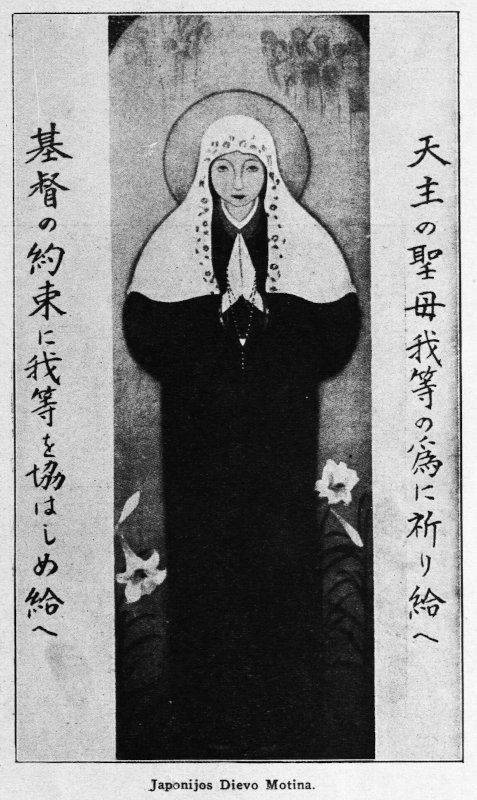
Two organizations of missioners which worked in Japan can be distinguished: the Jesuits and the Salesians of Don Bosco (SDB). Missions were strongly emphasized in both organizations. After special training, the missioners traveled to countries where Christianity was not widespread, including Japan. As a result, the first Lithuanians who lived in Japan for longer time were missioners. Consequently, their texts were a valuable source of information in the Lithuanian language about the country.
Japan as well as China and India were called countries of high culture in their texts. However, in many cases after the introduction of Japan and even the praise of the country for the progress of modernization, regrets regarding the religious situation in the country would follow.
(from various issues of "Misijos" and "Saleziečių žinios")
The Jesuits
The Salesians
Salesian Bulletin
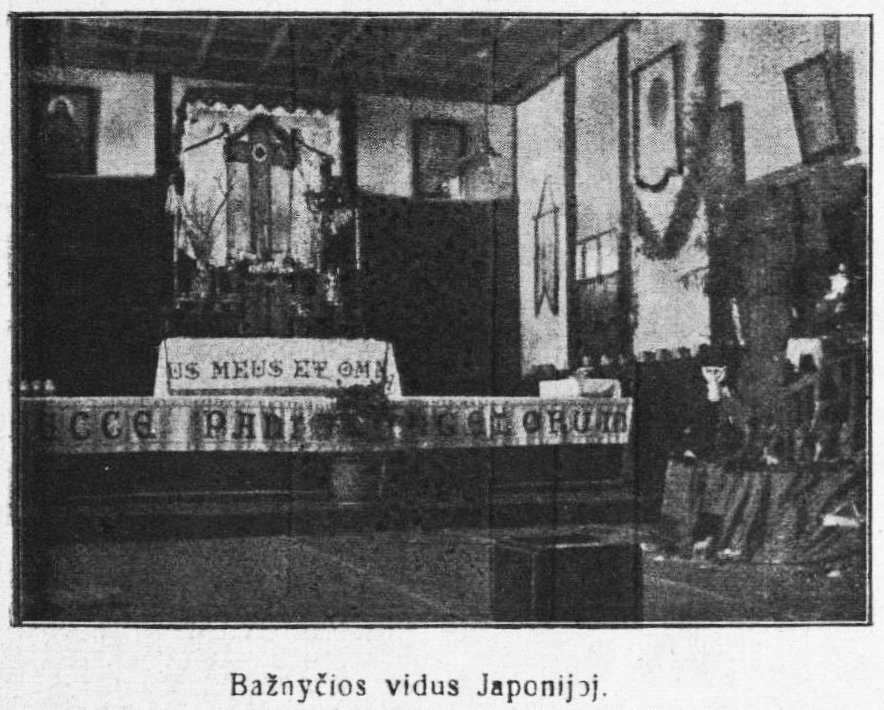
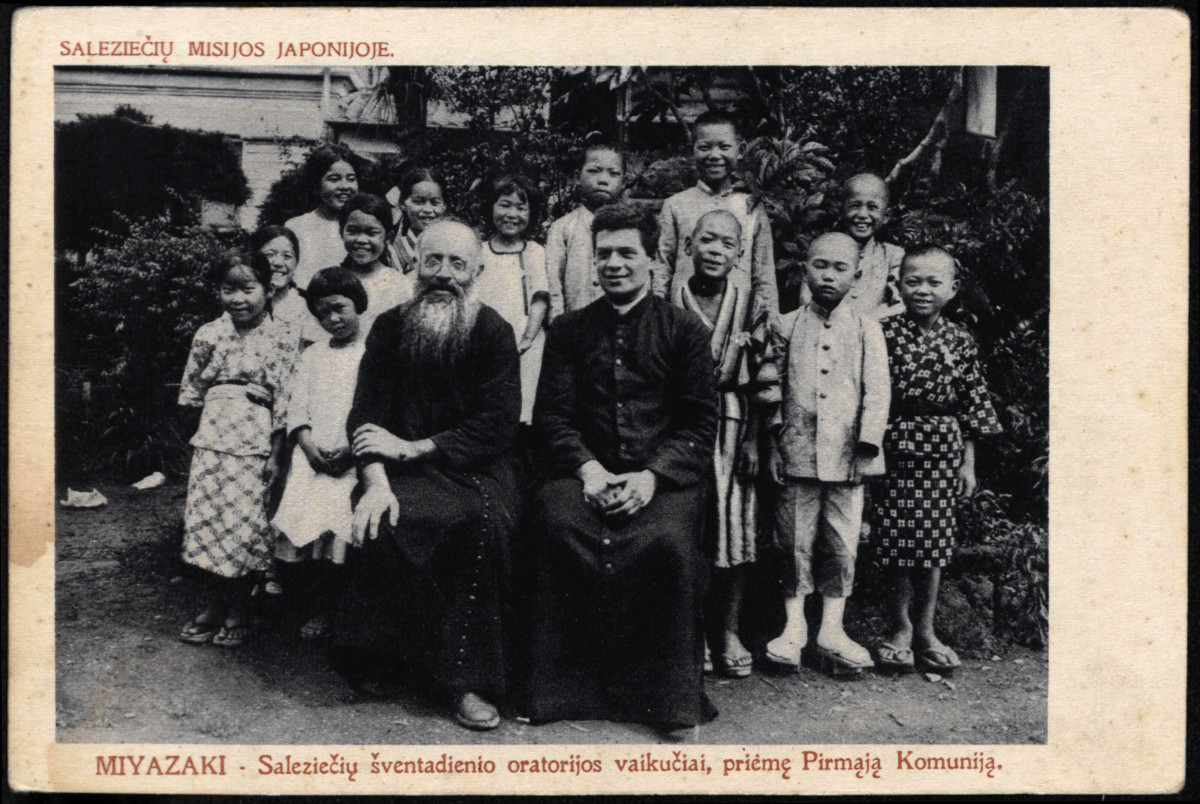
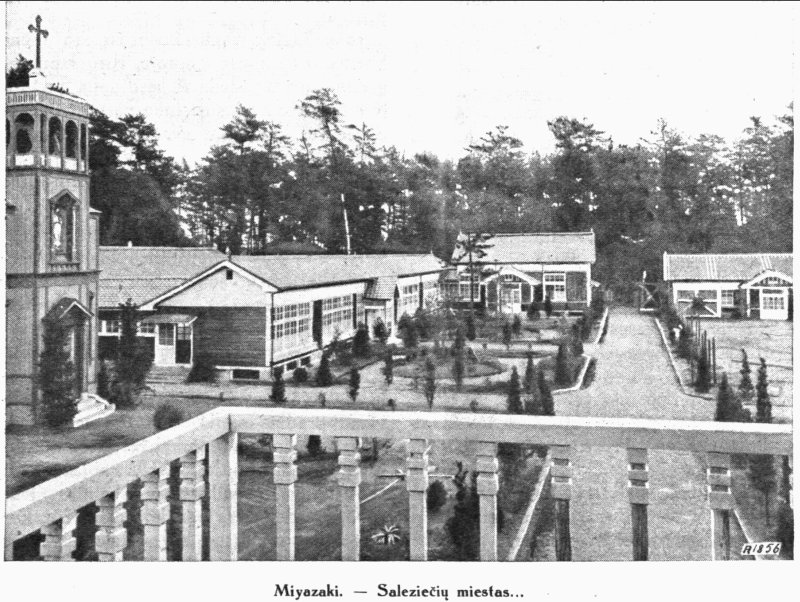
Albinas Margevičius
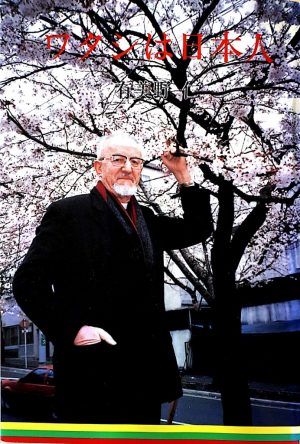
A. Margevičius lived in Japan from 1933 to 1988 and left many texts about this country. He admitted that Japan differs significantly from Lithuania in terms of language and culture. However, he found motivation and stayed in Japan until his death. He is the only person of Lithuanian origin, who acquired Japanese citizenship (1971), and published the autobiography “I am Japanese” (lit. “Aš - japonas”) in Japanese in 1987. On the other hand, he had never denied his Lithuanian origin – in his interview (1983) to the Toronto newspaper “The Lights of Homeland” (lit. “Tėviškės žiburiai”) A. Margevičius used perfect Lithuanian language.
A. Margevičius demonstrated a liberal worldview and attempted not to exoticize Japan as it was so common at that period of time. He did not avoid teasing those, who presented themselves as experts on Japan despite the fact that they had only a short time of contact with this country. Especially he directed his criticism over American troops deployed in Japan after the country’s capitulation. The main aspect of this criticism is the knowledge of Japanese language – A. Margevičius himself studied diligently this language because he clearly understood the significance of language for the knowledge of culture and society.
(click on dates to view more information)
-
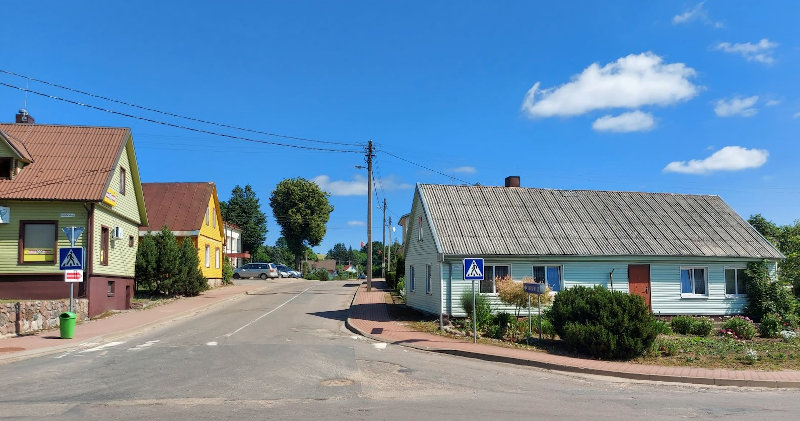 1st of February 1913, born in Kaltinėnai
1st of February 1913, born in KaltinėnaiAlbinas‘s father was a doctor and studied in Saint Petersburg, and his mother came from a farmer’s family.
(Kaltinėnai in 2021, Aurelijus Zykas) -
 In September 1929, went to study in Italy
In September 1929, went to study in ItalyAfter he had finished four classes in pro-gymnasium, Albinas studied to become a Salesian in 1929, in Italy.
("Saleziečių žinios", 1929, no. 5, p. 148)
-
 In October 1933, decided to become a monk
In October 1933, decided to become a monkHe decided to continue his activity where Christianity was barely known. After taking into consideration this request, Albinas was appointed to Japan, because only 7 years had passed since the beginning of the Salesian mission in this country.
After a month-long boat trip through Southeast Asia, he arrived in the port of Shanghai, from where he reached Nagasaki and later Miyazaki, semi-secretly in November 1933.
("Saleziečių žinios", 1936, no. 2, p. 44)
-
 In 1935, arrived in Tokyo
In 1935, arrived in TokyoIn Tokyo he started his active social activities: helped to organize book exhibitions, wrote letters to various newspapers. Articles of A. Margevičius were published in the “Salesian Bulletin” as well as in periodical publications in Lithuania. Also, his texts appeared in the publications of the Lithuanian diaspora.
("Saleziečių žinios")
-
 In 1938, started to study in the Great Theological Seminary of Tokyo
In 1938, started to study in the Great Theological Seminary of TokyoHe graduated in March 1942.
("Saleziečių žinios")
-
On the 21st of March 1942, ordained a priest
-
In 1959, appointed the Director of the Tokyo Salesian Primary and Secondary School
-
On the 30th of January 1971, acquired Japanese citizenship
Japanese nationality law is very strict; therefore, this was really an exceptional achievement. After he had become a Japanese citizen, A. Margevičius started to use his Japanese version of the name - Arubino Jin / Hitoshi (有美野・仁).
In April 1971 he was also appointed the Deputy Director of the Salesian Secondary School in Kawasaki.
-
In April 1975, became the Deputy Director of the Tokyo Salesian Boys‘ Home
-
 In April 1985, appointed the Abbot of the Salesian monastery in Kawasaki
In April 1985, appointed the Abbot of the Salesian monastery in Kawasaki -
 Died on the 12th of September 1988, in Kawasaki
Died on the 12th of September 1988, in KawasakiHis ashes were buried in the Salesian common grave of the catholic cemetery in Fuchū.
A year before his death, on the 15th of August 1987, A. Margevičius published his autobiography “I am Japanese” in the Japanese language.
(cover of the autobiography)
Bibliography
- Juknevičius, K. 2000. Lietuvių saleziečių istorija. Kaunas: Orientas.
- Kamaitis, D. Tėvo Albino pėdomis. ambasadoriai.eu/tevo-albino-pedomis/
- Railienė, Birutė. 2012. Pirmosios žinios apie Japoniją lietuviškoje spaudoje. Stepono Kairio trilogija (1906 m.). Rytų Azijos studijos Lietuvoje (sud. Aurelijus Zykas). Kaunas: Vytauto Didžiojo Universiteto leidykla, p. 93-102.
- Visockytė, E. 2014. Image of Japan in Lithuania: Analysis of Lithuanian Newspapers 1918 – 1940. VDU, magistro darbas.
- Urbonas, V., 1995. Lietuvių periodinė spauda. Vilnius: Voruta.
- Urbonas, V., 2002. Lietuvos žurnalistikos istorija. Klaipėda: Klaipėdos universiteto leidykla.

